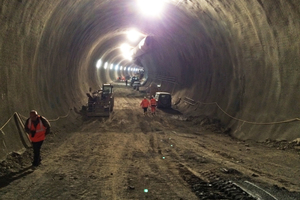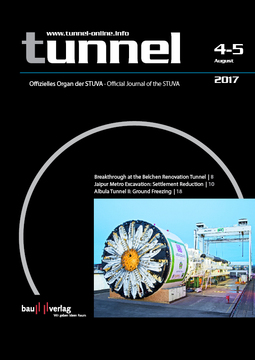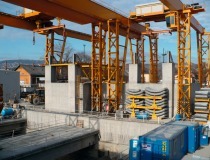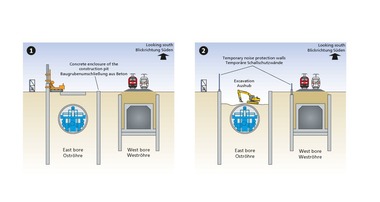Pforzheimer Tunnel:
Breakthrough in May 2017,
Opening in September 2018
Structural works in the new 909 m long Pforzheimer Tunnel on the railway line from Karlsruhe to Mühlacker have been completed. The original Pforzheimer Tunnel, built between 1858 and 1860, was no longer suitable for current requirements for rail operation, including the fact that its two tracks only had a spacing of 3.64 m, so a new twin-track tunnel has been built parallel to the existing tunnel. The main construction works started in August 2015 and the tunnel was broken through at the start of 2017, about three months later than it was still scheduled in autumn 2016.
The causes for this were...





